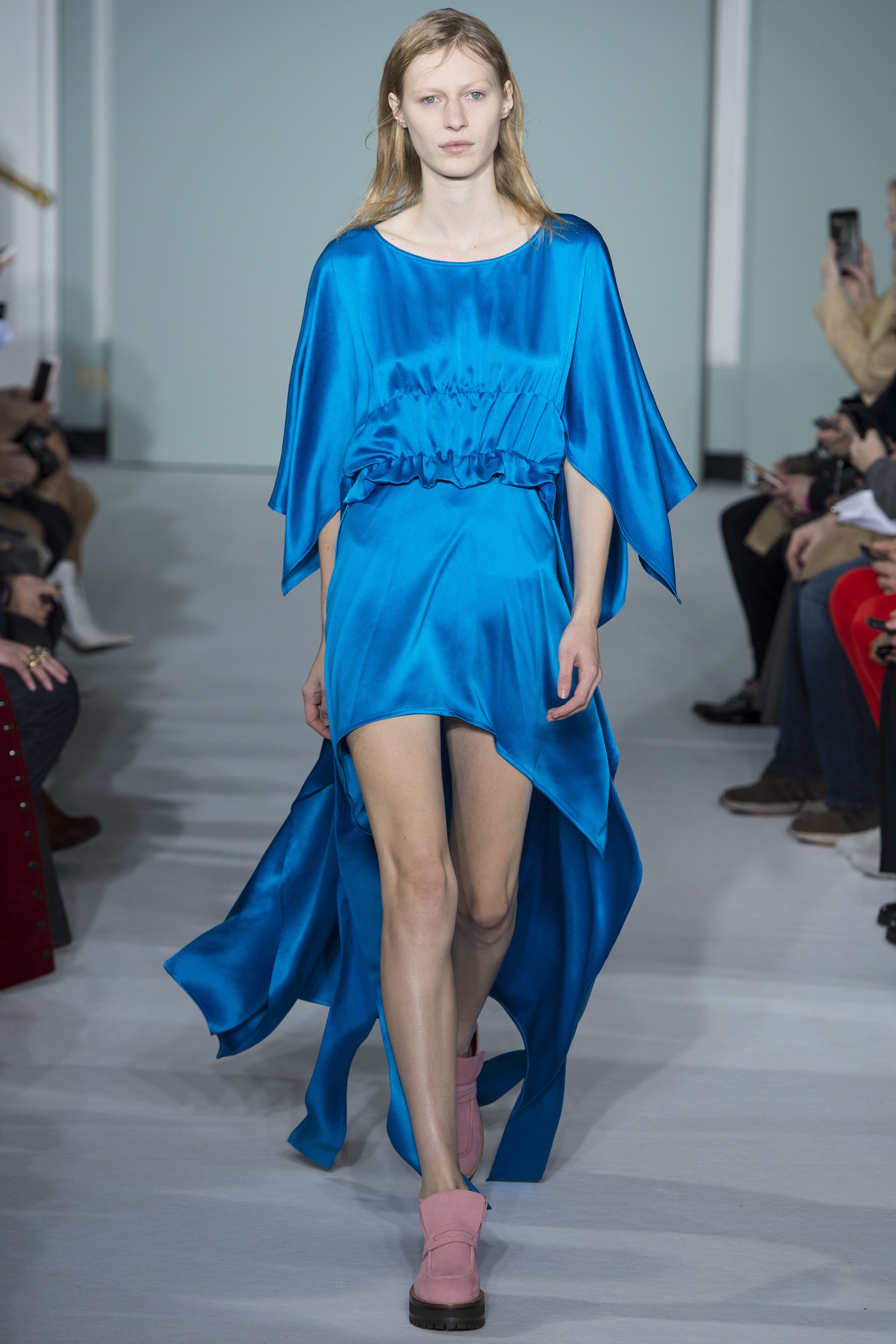A history of blue
2 December 2018
A history of fashion in blue
From inexistant, to hated, to empowering and finally to become the world’s most loved color, blue has had its stories.
Why did blue appear later than other colors? First of all, blue isn’t a color you find easily in plants. The Egyptians were actually the first to create a pigment of blue in 2200 BC from limestone mixed with sand and a copper-containing mineral. It was used for ceramics, statues and decorating Pharaoh's tombs. This was the creation of Egyptian blue.
Then blue began to be extracted from the Lapis Lazuli semi-precious gemstone and began to be used in art. Originating in Afghanistan, it was used mainly in Buddhist paintings. When it was imported to Europe by Italian traders in the XIV and XVth centuries, it was re-baptised Ultramarine (“beyond the seas”). It was a rare color, due to the difficulty of finding and processing the stone, and very prized for painters of Medieval Europe. It was used for important commissions like Gérard David’s Virgin and Child with Female Saints. Vermeer himself put his family into debt to purchase the blue color he used for the Girl with a Pearl Earring.
Throughout history, the color evolved into many hues that appeared successively throughout time: Cobalt Blue, Cerulean, Indigo, Navy Blue, or Klein Blue are just some examples.
In terms of fashion, blue has had its phases.
In roman times, when women began to wear blue, it was considered scandalous by the more elderly Romans. Later, in the Middle Ages, it became so popular that it rivaled with red in fashion. In the XI and XII centuries, inspired by the importance of blue in religious paintings, kings began to wear it extensively, such as Philip Augustus.
In the 18th century, blue was a women’s color, whereas pink was quite masculine (silk suits with embroidered flowers).
In modern times, blue was the color of uniforms, starting in 1860, before it became mainstream in different forms, like jeans for workers. It was a pacifist and calm color.
Blue denim is one of the most emblematic blue fashion pieces that exists. A prized outfit for workers in the US in the 1930s for its robustness. (thanks to Bavarian-born Levi Strauss), it then the most worn garment in the world and is available in all hues of blue. The term 'blue jeans' derives from 'blu Genova', because of the characteristic trousers worn by genoise sailors which were made of a particular blue fabric, practical and resistant.
Though many brands like Levi’s or Wrangler have tried to do jeans in different colors, blue has always had the highest place on the pedestal. Women in general have at least 8 pairs of blue jeans each.
Klein once said “blue has no dimensions. It is beyond dimensions”.
Sies Marjan was one of the designers that brought electric blue suiting in various shows. Dior is also a fan.
Blue exists in hundreds of hues. To find out which ones suit you and access looks that combine well with you blue, discover our Colorbird Styling Coach:
©I-DYLIC. Article by Eleonore Vadon
Sources: Michel Pastoureau for Dior




